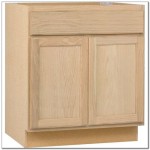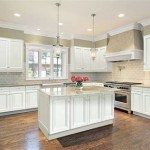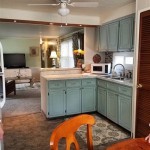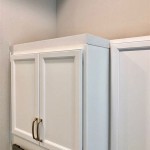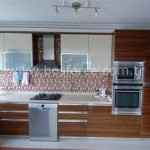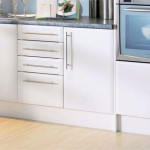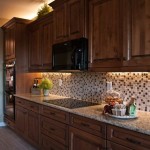How to Strengthen Kitchen Cabinets
Kitchen cabinets endure significant wear and tear over time. Heavy dishes, frequent opening and closing, and humidity can weaken the structure, leading to sagging shelves, loose doors, and overall instability. Strengthening existing cabinets is a cost-effective alternative to full replacement, improving functionality and longevity.
Reinforce Shelves with Additional Supports
Sagging shelves are a common issue, especially with older cabinets or those storing heavy items. Several methods can provide extra support:
- Shelf Liner: Non-slip shelf liner can add friction, preventing items from sliding and reducing stress on the shelf itself.
- Metal Shelf Supports: L-brackets or metal strips installed along the front or back edge of the shelf provide significant reinforcement.
- Wood Supports: Adding a strip of wood along the shelf's underside, glued and screwed in place, can distribute weight and prevent bowing.
- Replacing Shelves with Thicker Material: Consider replacing existing shelves with thicker plywood or solid wood for enhanced durability and support.
Secure Loose Screws and Hinges
Loose screws and hinges contribute to cabinet instability and can lead to further damage. Tightening or replacing these hardware components is a simple yet effective strengthening solution:
- Tighten Loose Screws: Use a screwdriver to tighten any loose screws on hinges, door pulls, and cabinet frame connections.
- Replace Stripped Screws: If screws are stripped, replace them with slightly larger screws or use wood glue and toothpicks to fill the stripped hole before re-screwing.
- Upgrade Hinges: Replace worn-out or weak hinges with sturdier European-style hinges or concealed hinges for improved support and functionality.
Strengthen Cabinet Frames
A weak cabinet frame can lead to overall instability. Reinforcing the frame itself is crucial for lasting strength:
- Corner Braces: Metal corner braces installed inside the cabinet frame provide added rigidity and stability, especially at joints.
- Wood Glue and Screws: Reinforce existing joints by adding wood glue and screws to secure loose connections and add strength.
- Backing Boards: Installing or reinforcing existing backing boards with thicker plywood provides overall support and prevents racking.
Address Water Damage
Water damage can significantly weaken cabinet structure, leading to warping and deterioration. Addressing this promptly is crucial:
- Identify and Repair Leaks: Locate and fix any plumbing leaks that contribute to water damage. Ensure proper ventilation to prevent moisture buildup.
- Dry Affected Areas: Thoroughly dry any areas affected by water damage before attempting repairs. Use fans or dehumidifiers to accelerate the drying process.
- Replace Damaged Wood: Remove and replace any warped or rotted wood with new material. Treat the new wood with a water-resistant sealant.
Improve Door Stability
Loose or sagging cabinet doors not only look unsightly but can also strain the hinges and frame. Addressing these issues improves both aesthetics and functionality:
- Adjust Hinge Screws: Tighten or adjust the hinge screws to ensure proper door alignment and reduce stress on the hardware.
- Add Magnetic Catches: Installing magnetic catches helps keep doors securely closed, reducing strain on the hinges and preventing warping.
- Reinforce Door Frames: Glue and screw small wooden blocks to the inside corners of the door frame to add rigidity and prevent warping.
Strengthen Cabinet Bases
A solid base is essential for overall cabinet stability, especially for base cabinets supporting countertops and heavy appliances:
- Level the Cabinets: Use shims to level the cabinets and ensure even weight distribution across the base.
- Reinforce the Floor: If the floor beneath the cabinets is weak or uneven, consider reinforcing it with additional plywood or other structural support.
- Add Supporting Blocks: Install wooden blocks or bricks under the cabinet base to provide extra support, especially for areas bearing heavy loads.
Regular Maintenance for Long-Term Strength
Regular maintenance can prevent many of the issues that lead to weakened cabinets. Simple practices can significantly extend cabinet lifespan:
- Clean Regularly: Regularly clean cabinets inside and out to prevent the buildup of grease, grime, and moisture.
- Inspect Hardware: Periodically check screws, hinges, and other hardware for looseness or damage and address issues promptly.
- Protect from Moisture: Use waterproof mats or liners under sinks and in areas prone to spills to prevent water damage.
- Ventilate Properly: Ensure adequate ventilation in the kitchen to prevent moisture buildup, which can weaken cabinet materials.

Reinforcing Cabinets For Concrete Countertops Fine Homebuilding

25 Easy Ways To Update Kitchen Cabinets

Genius Diy Raising Kitchen Cabinets And Adding An Open Shelf The Crazy Craft Lady

10 Simple Ideas To Update Your Kitchen Cabinets Jenna Sue Design

9 Ways To Improve Kitchen Functionality Bob Vila

5 Ways To Refurbish Kitchen Cabinets Without Replacing Them

Reinforcing Particle Board Cabinets Why Do It Handhills

How To Update Your Kitchen Cabinets Without Replacing Them Real Estate U S News

I Just Bought A House But The Kitchen Isn T As Nice Thought

Home Repair How To Fix Kitchen Cabinets Diy
Related Posts

